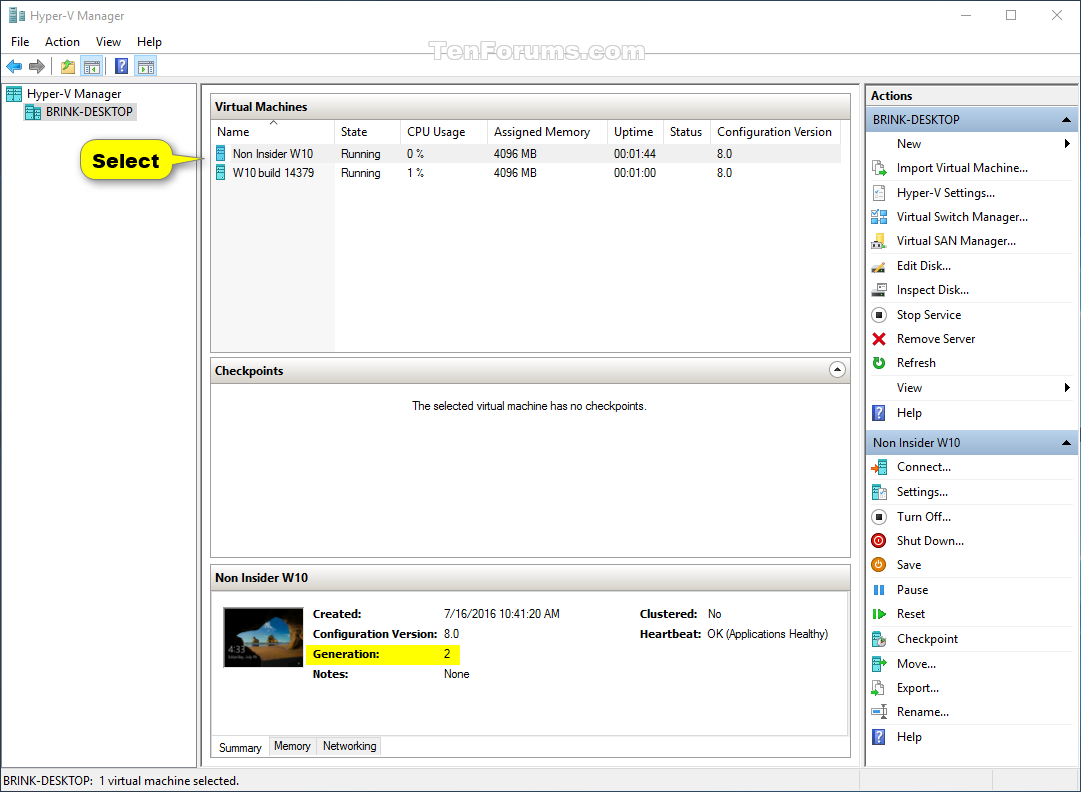Virtual Server Download Windows 10
Enable Hyper-V to create virtual machines on Windows 10.
Hyper-V can be enabled in many ways including using the Windows 10 control panel, PowerShell or using the Deployment Imaging Servicing and Management tool (DISM). This documents walks through each option.
IMPORTANT: Starting with Windows 10 October 2018 Update, RSAT is included as a set of 'Features on Demand' in Windows 10 itself. See 'Install Instructions' below for details, and 'Additional Information' for recommendations and troubleshooting. RSAT lets IT admins manage Windows Server roles and features from a Windows 10 PC. Enable Hyper-V to create virtual machines on Windows 10. Hyper-V can be enabled in many ways including using the Windows 10 control panel, PowerShell or using the Deployment Imaging Servicing and Management tool (DISM). This documents walks through each option. Note: Hyper-V is built into Windows as an optional feature - there is no Hyper-V. The Microsoft Evaluation Center brings you full-featured Microsoft product evaluation software available for download or trial on Microsoft Azure. Power Virtual Agents. Windows; Windows 10 Enterprise; Windows and Office Deployment Lab Kit; Windows Server; Windows Server 2019; Windows Server 2019 Essentials; Hyper. VirtualBox is a virtual environment, which allows to emulate any operational system on the PC, including open-source platforms and archaic systems from Windows generation, like Win 2000 or Win Millennium Edition. In order to use VirtualBox, first you need to download the distributive and install it onto the hard drive. You can still create an XP virtual machine using VMWare Player or VirtualBox, by following this tutorial: 'How to test Windows 10, 8, 7, Vista, XP for Free, Legally'. XP Mode was introduced for Windows 7 (Professional, Enterprise, or Ultimate) users as a way to run software designed for XP in Windows 7.
Note: Hyper-V is built into Windows as an optional feature -- there is no Hyper-V download.
Check Requirements
- Windows 10 Enterprise, Pro, or Education
- 64-bit Processor with Second Level Address Translation (SLAT).
- CPU support for VM Monitor Mode Extension (VT-c on Intel CPUs).
- Minimum of 4 GB memory.
The Hyper-V role cannot be installed on Windows 10 Home.
Upgrade from Windows 10 Home edition to Windows 10 Pro by opening up Settings > Update and Security > Activation.
For more information and troubleshooting, see Windows 10 Hyper-V System Requirements.
Enable Hyper-V using PowerShell
Open a PowerShell console as Administrator.
Run the following command:
If the command couldn't be found, make sure you're running PowerShell as Administrator.
When the installation has completed, reboot.
Enable Hyper-V with CMD and DISM
The Deployment Image Servicing and Management tool (DISM) helps configure Windows and Windows images. Among its many applications, DISM can enable Windows features while the operating system is running.
To enable the Hyper-V role using DISM:
Open up a PowerShell or CMD session as Administrator.
Type the following command:
For more information about DISM, see the DISM Technical Reference.
Enable the Hyper-V role through Settings
Right click on the Windows button and select ‘Apps and Features’.
Select Programs and Features on the right under related settings.
Select Turn Windows Features on or off.
Select Hyper-V and click OK.
When the installation has completed you are prompted to restart your computer.
Make virtual machines
-->Purpose
This documentation provides information about the Microsoft Virtual Server.

Where applicable
Microsoft Virtual Server 2005 allows you to create separate virtual machines on top of your Microsoft Windows desktop, where you can install virtually any Intel-architecture operating system. Each virtual machine emulates a complete hardware system—from processor to network card—in a self-contained, isolated software environment, enabling the simultaneous operation of otherwise incompatible systems.
Developer audience
The Virtual Server reference is for developers who are creating client applications that automate the deployment and operation of virtual machines.
Run-time requirements
Microsoft Virtual Server 2005 is supported on Windows Server 2003 and Windows Server 2008.
Microsoft Virtual Server 2005 R2 SP1 Update is supported on Windows Server 2008.
Microsoft Virtual Pc Windows 10
In this section
